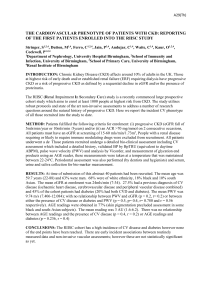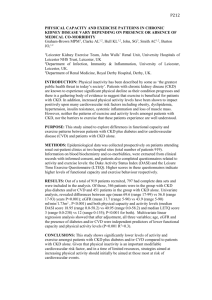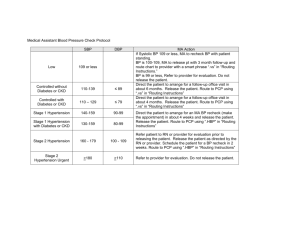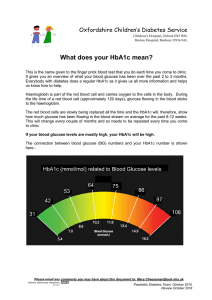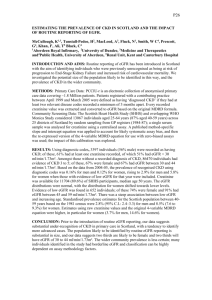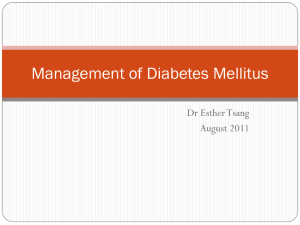Heart Failure - gp web solutions
advertisement
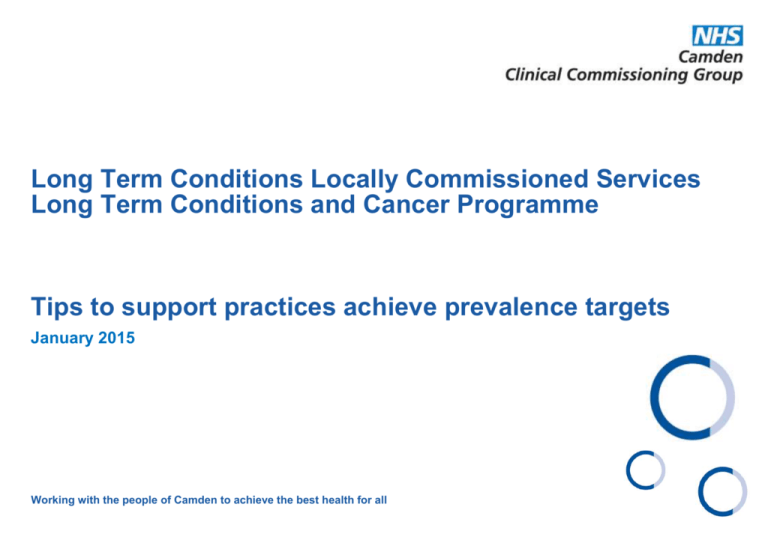
Long Term Conditions Locally Commissioned Services Long Term Conditions and Cancer Programme Tips to support practices achieve prevalence targets January 2015 Working with the people of Camden to achieve the best health for all The long term conditions (LTC) locally commissioned services (LCS) supports practices to increase detection of five LTCs – Chronic Kidney Disease (CKD); Chronic Obstructive Pulmonary Disease (COPD), Diabetes (DM), Hypertension (HT) and Heart Failure (HF). Below is a list of actions and searches by which practices can increase the detection for each of the LTCs. Diabetes 1. 2. 3. 4. Do HbA1c check on all with QDS>20% every three years Record BMI, family history and ethnicity to obtain accurate QDS score. Consider adding question on family history of diabetes to registration questionnaire. Code all people with pre-diabetes, IGT and IFG. Invite them for HbA1c check annually – 50% pre-diabetes develop diabetes within 10 years. Consider ordering a GTT as well as HbA1c in some cases – evidence is that that GTT is a more sensitive test for diabetes, though harder for patient to undertake (always order HbA1c). CKD 1. Code all people with eGFR of 30-59 on two or more occasions as having CKD 3a (eGFR 45-59) or CKD 3b (30-44). Arrange urine ACR testing on all these patients. 2. Order a second eGFR test on all people with a single eGFR reading of 30-59 Hypertension 1. Undertake BP testing (or obtain a BP test result performed elsewhere) on all registered patients > 40 years at least once every three years. 2. Undertake ABPM testing on people with raised BP (>140/90) not on practice HT register where there is a concern that this is due to white coat effect, or that the person is not likely to return for further BP testing. 3. Identify patients who may be missing coding but are hypertensive by searching for all patients who are not on the HT register with previous 2 BPs >160/90 4. Review the searches on EMIS population manager that identify people at the practice NOT on the practice’s HT register but previous BP>160/95 and previous BP>140/90: Many of those with BP>160/95 will have hypertension, possibly Stage 1 HPT for who treatment may not be indicated, but should be properly assessed for risk of CVD and at very least checked annually. Consider inviting in for further BP test and / or offering ABPM form practice. Those with BP>140/90 should also be followed up, especially those with CVD risk>20% or established CVD. 5. Review search on EMIS population manager which identifies patients on hypertensive medication but not on hypertension register (this search excludes other people coded as having other conditions for which HPT medications are appropriate e.g. …) Working with the people of Camden to achieve the best health for all 2 Heart Failure Search for all patients with coded ~Ejection Fraction <…% and review whether appropriate to code as having Heart Failure Read code all echocardiography results including Ejection Fraction (EF) Search consultation text for ECHO results in high risk patients to identify those with unrecognized HF, indicated by reduced EF Identify patients who are not on the HF register by searching for all patients coded with LVSD but not on HF register For additional support, contact the community HF nursing service to arrange a case finding visit from the HF nurses Additional searches include: i. All patients with ankle swelling and diuretics but no heart failure diagnosis. ii. All patients on bisoprolol, carvedilol, spironolactone or epleronone but no heart failure diagnosis. iii. All patients with a shortness of breath code but no heart failure diagnosis. 7. Additional targeted screening includes: i. All patients above 60 with IHD ii. All patients above 60 with AF (they are most likely to have had an echo) iii. All patients with valvular heart disease 1. 2. 3. 4. 5. 6. Chronic Obstructive Pulmonary Disease 1. Increase case finding by searching for all patients not on the COPD register, above the age of 35 years, who are smoking or ex-smokers and have not had spirometry screening. Undertake and record handheld spirometry screening (or obtain a spirometry test performed elsewhere) for these patients. 2. Identify patients who may be missing coding for COPD by searching for all patients without an asthma or COPD code who are smokers or ex-smokers on inhalers Working with the people of Camden to achieve the best health for all 3
